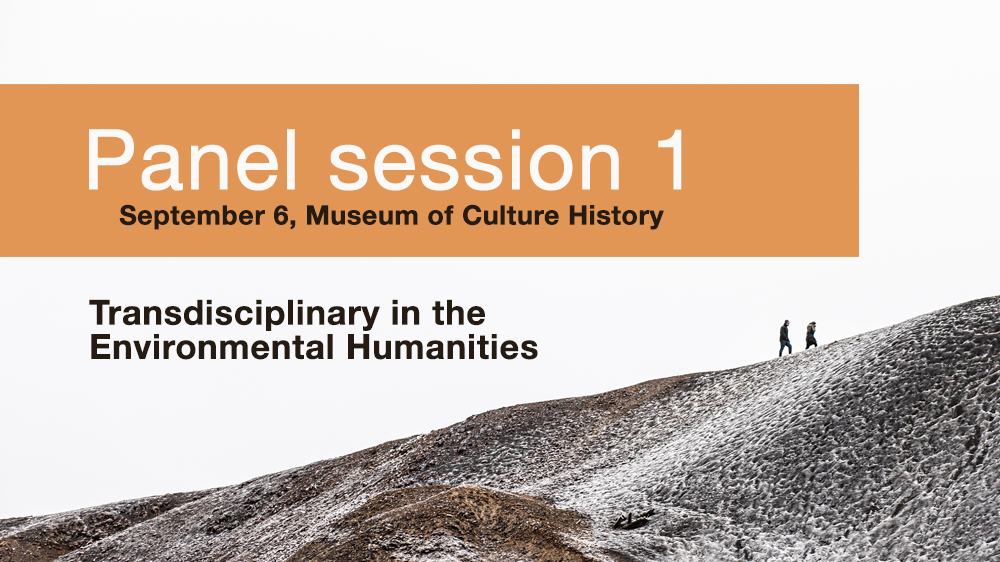Abstract
In Plants: Past, Present and Future, Wiradjuri man Michael Shawn-Fletcher writes: “Plants are at the core of life as we know it. They fix the almost inexhaustible energy that thunders down to Earth’s surface from the Sun into a form that makes it accessible to all life on Earth” (2022, p. 50). Rooted in earth and open to sky, plants co-shape the places in which they dwell, and the lives and desires of those dependent upon them. This panel discusses literary explorations of cultural, material, and spiritual human-plant relations in localities within Japan, Scandinavia, and Australia.
Drawing on memorial studies, animism, and the practice of Japanese tree burials, Ingvild Boberg examines two picturebooks based on the tsunami that struck Northern Japan in 2011. In the books, children who died in the tsunami are metaphorically brought back through plants, returned both as and among flowers. Engaging with the minority culture of Finnskogen, Bredesen Opset focuses on representations of plants, and lives surrounded by plants, in the poems, graphic images and music in texts such as Sinikka Langeland and Tore Hansen’s Karhun emuu. Runesanger fra Finnskogen (2001), Aasta Hoth’s Johannes (1975), and selected poems of Hans Børli. Informed by Kulin Nation Aboriginal elders, Karen Barad’s concept of diffraction, and perspectives from colonial botany, Guanio-Uluru discusses how the picturebooks Welcome to Country (2016) by Aunty Joy Murphy and Lisa Kennedy and The Rabbits (2008) by John Marsden and Shaun Tan both feature trees to highlight their differing epistemologies. Building on John Charles Ryan’s approaches to vegetal poetics and Palyku writers Gladys and Joy Milroy’s perspective that “Trees are our Family Too” (2008), Duckworth argues that she-oak trees in Kirli Saunder’s verse novel Bindi (2020), which allude to regeneration projects and Indigenous knowledge, function as material and semiotic agents of hope.
The panel will be chaired by Melanie Duckworth, and is part of the symposium on “Transdisciplinary in the Environmental Humanities”.
Papers
- Ingvild Boberg, Doctoral Research Fellow, Department of Culture Studies and Oriental Languages, University of Oslo, “Plant Children in Picture Books about the Tôhoku Earthquake and Tsunami, 2011”
- Barbro Bredesen Opset, Associate Professor, Department of Languages, Literature and Culture, Østfold University College, “Fire, snow, and rocky grounds. Literary representations of life in the Forest of the Finns”
- Lykke Guanio-Uluru, Professor, Department of Language, Literature, Mathematics and Interpreting, Western Norway University of Applied Sciences, “Trees as Story Participants: Plant Representation in Welcome to Country and The Rabbits”
- Melanie Duckworth, Associate Professor, Department of Languages, Literature and Culture, Østfold University College, “The voice of the she-oak: Vegetal poetics, Indigenous knowledge, and hope in Kirli Saunders’ verse novel Bindi”
About the Symposium
As the Norwegian Researcher School in Environmental Humanities (NoRS-EH) starts its 5th year, the Oslo School of Environmental Humanities (OSEH) is organizing a symposium on “Transdisciplinary in the Environmental Humanities” on 6 and 7 September 2023 to highlight and celebrate the innovative environmental humanities research happening in Norway and neighboring Scandinavian countries, especially by early career researchers. Read more about the programme for the symposium here.
